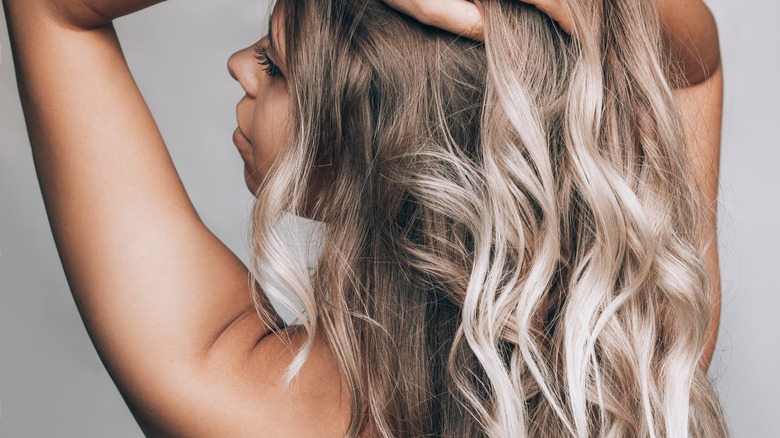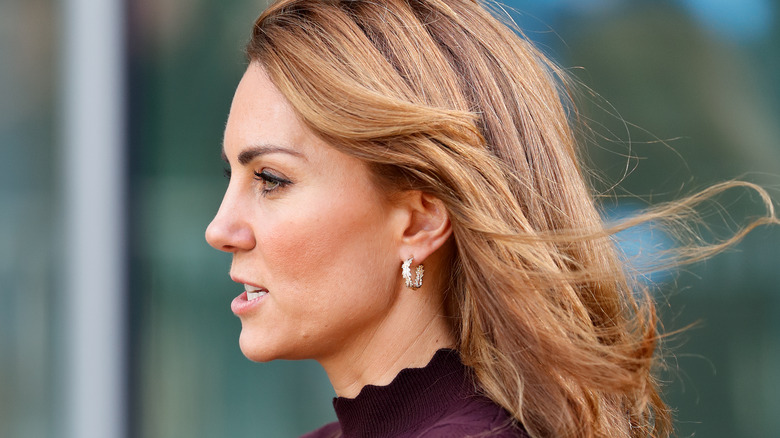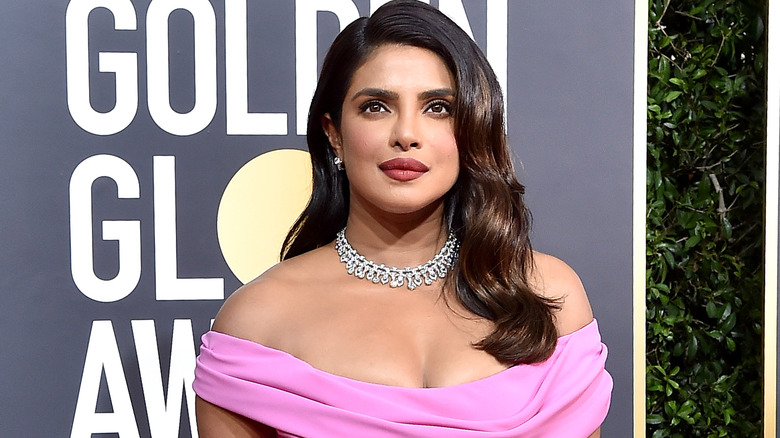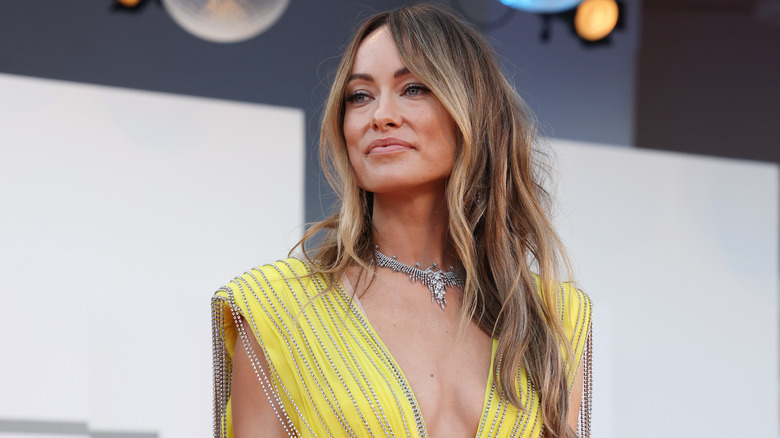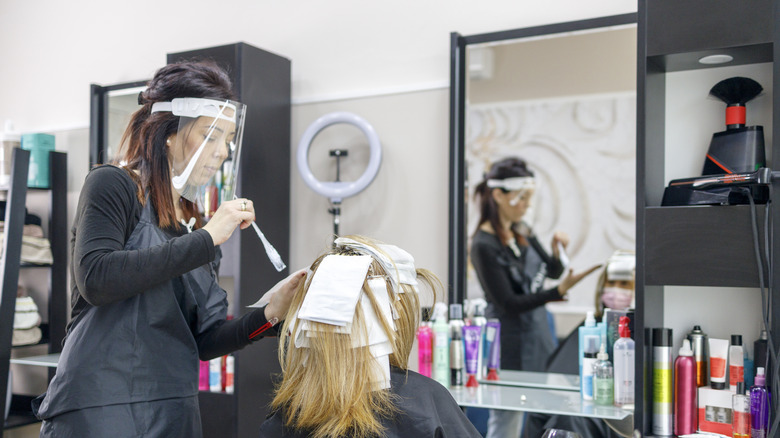Babylights, Balayage, Highlights: What's The Difference?
If you pay attention to hair color trends, it can seem like every day brings a new trend you have to keep up with. There are so many techniques, often with the same or similar names, that have very subtle differences — and they all seem to encourage you to spend more money.
Many of us are already familiar with highlights. But if you've visited a salon lately, you've likely encountered services such as ombre, balayage, and babylights on the menu. As if the names weren't already confusing enough, there's the fact that they all have different prices, too.
All these techniques serve a similar purpose: to add dimension to your hair via lightening. Dimension is the contrast of different tones in color — whether with similar shades or drastically different ones. Unlike straight up dying your hair all one-color, highlights, lowlights, babylights, balayage, and even ombre allow for the stylist to strategically place where those color changes happen. But what exactly is the difference between these techniques?
Highlights
Most of us already know what basic highlights are since they've been popular the longest. Though modern highlights picked up slightly in the 1980s with Brooke Shields's subtle pieces, it took a while for the color craze to really hit. But since the mid-90s, with Jennifer Aniston's "money piece" highlights, Lance Bass's frosted tips, and Kelly Clarkson's "chunky" highlights in the 2000s, requests for the look has been a mainstay at salons everywhere.
"Highlighting is a treatment that lightens hair to mimic what the sun would do in order to draw attention to certain pieces of hair," colorist Rachel Korman told InStyle. Where they used to cover the head with a plastic cap with holes, using a crochet hook to pull selected hairs out to lighten them, today, stylists use a comb to weave out selected strands and cover them in a foil, applying a lightening agent like bleach to remove some of the natural color. Similarly, lowlights also add dimension to your hair in the opposite way, by adding darker colors instead of a lightening agent.
Highlights are great because they're really customizable. A person can ask for a full highlight to cover their entire head, or a highlight focusing on the top or front of the hair to highlight the face and accentuate certain features. As colorist James Corbett told InStyle, "Highlights can add drama and interest by accentuating the layers of your haircut." They can cover up gray hair, or if you want to embrace your gray, highlights can add warmth to make it look more dynamic. Highlights are more dramatic than other similar techniques, like babylights.
Babylights
Babylights are a style of highlighting technique named for two reasons: for one, the highlights are thinner and finer, so they capture a more subtle, natural brightening effect. "Babylights are a more modern way of highlighting hair," Rachel Korman told InStyle, "and the rule for applying them is that it's such a thin section of hair that you can read the newspaper through it."
The tiny highlights blends into the base color more naturally, creating an overall lightening, rather than looking like an intentional, obvious highlight. The second reason for the name is, it matches the kind of subtle highlights babies and children naturally have. As James Corbett said, "Babylights give you a subtle melt of light hair that creates an all-over brightness," which means you can lighten your hair without using a monochrome color or all-over bleach.
Babylights became popular around 2008, apparently as a response to the chunky, striped highlights of the 1990s and early 2000s. Even though both color approaches rely on foils and bleach to lighten hair, babylights are less about drama and more about creating a sun-lightened look. As fashion continues toward its current "I woke up like this" natural trend, the desire for work that doesn't look like work results in these types of techniques. Because they're so subtle, they work wonderfully for brunettes or blondes who want to go a smidge lighter without bleaching their entire head.
Balayage
Balayage is another highlighting technique in response to the tiger-stripe, chunky highlights of the early aughts. "Foil highlights look so dated – that stripy uniform colour is so unflattering," L'Oreal color spokesperson Jack Howard tells Good Housekeeping. "Everyone has balayage [now] because it's painted in exactly the right place to suit you, it grows out naturally (so is lower maintenance) and looks bang up to date, and therefore youthful." But Balayage is still highlighting, just a different technique for doing it.
Balayage, like highlights, uses thicker sections of hair for a more dramatic result. But while highlights and babylights both use foils, balayage doesn't. Instead, the color is hand-painted vertically on the hair and processed in open air, so it doesn't utilize the heat retained by foils. This is why some stylists refer to it as 'hair painting.' "Balayage is a freehand method of sweeping lightener onto the surface of the hair," L'Oreal stylist Min Kim explained to Hair, meaning more natural movements that blend the lightened pieces seamlessly with the base hair. In addition, highlights cover the strand from root to tip, while balayage is applied mid-length, blending the colors to create a gradual change in tones.
Like balayage, ombre also involves hand-painting. However, the main difference is it the color is placed horizontally rather than vertically. This creates a gradient-like effect that gets lighter toward the ends of the hair (conversely, a reverse ombre goes from light hair at the crown to dark hair at the ends). Ombres are a great way to create drama with fun colors, such as red and black, honey blonde and dark brown, and blond and purple.
How to choose the right style for you
When deciding what style is best for you, ask yourself how much dimension or visible contrast you want. Babylights create an overall lightening affect, while highlights and balayage produce a contrast you can clearly see through ribbons of color. That's why babylights can look more natural, especially on fine hair. "Fine hair is the best for babylights because it is a subtle technique, but [delivers] high impact," colorist Rita Hazan told Allure. Babylights can make ultra-fine, flat hair appear full and lively. Meanwhile, "thicker and coarser hair requires more of a heavier highlight to be visible," said Hazan. That's also why babylights are not good for accentuating facial features or defining your haircut shape, the way highlights do.
While prices vary drastically, depending on location, hair type, texture, and style, babylights, balayage, and ombre tend to cost more because they take more time and stylists must undergo specific training to know how to apply them. However, they're all great for slow regrowth, while highlights have a clearer demarcation line, requiring more frequent service.
As these are all color services, you would treat them essentially the same way. Bleached or lightened hair is automatically more fragile than natural hair, and the higher the color contrast, the more maintenance required after you leave the salon. Use shampoo and conditioner that protects color-treated hair, and refrain from washing too frequently as that could contribute to dryness. Purple and blue shampoo can be good for reducing brassiness, even in brown or black hair. Hair gloss can help maintain color, and hair masks or deep conditioning can protect, hydrate, and nourish your hair. You might even sleep on a silk pillowcase, to retain moisture and reduce friction and frizz.
